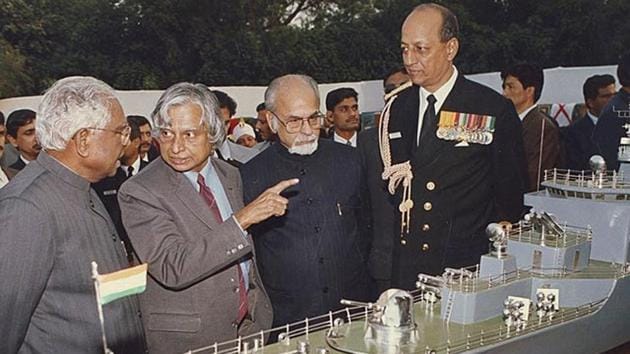Multi Party Era
Elections in 1989 led to the defeat of the Congress party, which had until then dominated the elections to the parliament in the country, but it also did not result in a majority for any other party. National Front government formed a coalition government with support of BJP and Left parties from outside. This marked the beginning of an era of multi-party system as no single party was able to secure clear majority, which continued till 2014, when Narendra Modi led BJP single handedly secured a majority (282 seats out of 543 seats) and formed the government.
New Aspirations
The decade of 1990s marked the emergence of regional parties at national level. It was during this period that Congress dominance over Indian politics ended. The period also sawthe rise of Dalits i.e., members of scheduled castes and backward classes (Other Backward Classes) as a powerful political force. After the National Front government’s decision to implement the recommendations of the Mandal Commission, many parties emerged that sought better education and employment opportunities for OBCs.
Instability
National Front government led by V.P. Singh lost majority in the parliament when Advani, who was on a rath yatra, got arrested in Bihar and BJP withdrew its support. It was followed by a short lived Chandra Shekhar government which lost majority in the parliament when Congress withdrew its support on 5th March 1991.
The murder of Rajiv Gandhi in 1991, during an election campaign at Sriperumbudur, near Madras by LTTE
militants was followed by Congress forming a coalition government under Narasimha Rao. Despite being a minority Congress government, it undertook radical economic reforms but Babri Masjid demolition engulfed the nation with communalism and riots. Further , allegations of corruption and slowing down of economic reforms of 1991, resulted in decreasing popularity of the government.
However, it was able to complete its 5 years term successfully. After the 1996 general elections, BJP government under Atal Bihari Vajpayee lasted only from 16 May 1996 to 1st June 1996, as it failed to prove its majority in parliament.
This was followed by a United Front government with H.D. Deve Gowda as Prime Minister. It was supported by Congress. Congress withdrew its support on 30th March, 1997 and failed to form government on its own and again supported the United Front with I .K.Gujral as Prime Minister. The Gurjal government lasted from April 1997 to March 1998, as it failed to retain majority. Fresh elections were held in 1998 and BJP formed government with support from TDP, AIADMK and Trinamul
Congress. Large number of allies prevented stability and finally, in April 1999 AIADMK withdrew its support.
The instability generated by coalition hampered the government’s ability to take development initiatives. The economic reforms undertaken by Narsimha Rao government were, initially, able to provide economic stability but, later, the political instability prevented successive governments from carrying forward the reforms to next level .
Gujral Doctrine
I.K. Gujral had served as India’s minister of external affairs in the cabinets of V.P. Singh and H.D. Deve Gowda. He went on to become Prime Minister in April 1997. During his tenure he followed a policy of non-reciprocal accommodation with neighbouring countries of India.

Principles of Doctrine
As a foreign minister under Deve Gowda government, I.K . Gujral articulated the “Gujral Doctrine” keeping in mind the significance of cordial relationship with neighbours in peace building measures and development process and later optimized it, when he became Prime Minister. The doctrine stands on five principles.
- With the neighbours like Nepal, Bangladesh, Bhutan, Maldives and Sri Lanka, India would not ask for reciprocity but would give all that it can in good faith and trust.
- No south Asian country would allow its territory to be used against the interest of another country of the region.
- No country would interfere in the internal affairs of another country.
- All south Asian countries must respect each other’s territorial integrity and sovereignty.
- All south Asian countries must settle all their disputes through peaceful bilateral negotiations.
Rationale
In his autobiography, ‘Matters of Discretion’, I.K. Gujral wrote that logic behind his doctrine was that since India had to face two hostile neighbours in the north and the west, she had to be at ‘total peace’ with all other immediate neighbours in order to contain Pakistan’s and China’s influence in the region.
Application
Gujral Doctrine led to signing of a 30-year water sharing treaty (Ganga Water Accord) between India and Bangladesh in 1996. Later, confidence building measures with China were followed by official visit of Chinese premier in India.
Critical Analysis of Doctrine
Positives
- The doctrine brought about a considerable change in the manner India’s relations were conducted with its immediate neighbours, especially the smaller ones.
- It was reciprocated by the smaller neighbours in equal measures.
- It recognized the importance of peaceful neighbourhood in realization of Indian ambition of being a global power.
- It sought to reconcile the present reality of ‘nation states’ to the fluid and syncretic history of South Asia.
Negatives
- The doctrine has, however, been criticized for its crippling impact on India’s security and intelligence capabilities.
- It has been blamed as the key reason for intelligence failure before the Kargil conflict.
- It has also been criticized for placing India in a disadvantageous position, by abandoning its interests in a world guided by realpolitik, vis-a-vis its immediate neighbours.
